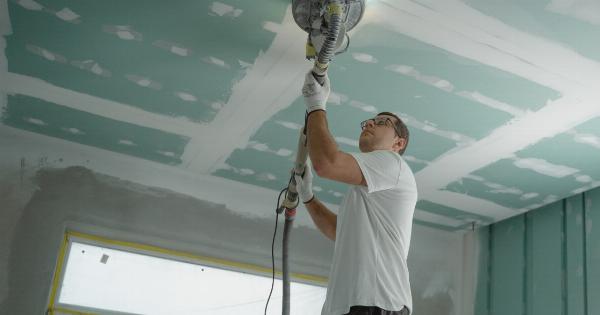Allergies can affect anyone at any age, and symptoms can range from mild to severe. Symptoms of allergies can include runny nose, sneezing, itchy eyes, and hives.
Allergies can be triggered by a variety of things, including pollen, dust, pet dander, and mold. If you or someone in your family is suffering from allergies, there are steps you can take to allergy-proof your home.
1. Keep It Clean
The first step to allergy-proofing your home is to keep it clean. Dust, mold, and pet dander are some of the most common allergens found in homes.
Dust can collect on surfaces, curtains, and carpets, so it’s important to vacuum and dust your home regularly. If you have pets, make sure to bathe them often to reduce the amount of dander in your home. Wiping down surfaces with a damp cloth can also help to reduce the amount of dust and allergens in your home.
2. Control Indoor Humidity
Mold and dust mites thrive in humid environments, so it’s important to control the humidity in your home. Keeping the humidity level between 30% and 50% can help to prevent the growth of mold and dust mites.
You can use a dehumidifier to control the humidity in your home, especially in areas that are prone to moisture, like the bathroom and basement. Air conditioning can also help to reduce humidity levels.
3. Use Dust Mite Covers
Dust mites can be a major problem for people with allergies. They are microscopic insects that feed on dead skin cells and are commonly found in bedding and pillows.
Using dust mite covers on your pillows, mattresses, and box springs can help to reduce the amount of dust mites in your home.
4. Replace Your Air Filters
Replacing your air filters regularly can help to reduce the amount of allergens in your home. Air filters can trap dust, pollen, and other allergens, but only if they are clean.
You should replace your air filters at least every three months to ensure that they are working properly. If you have pets or are allergic to pollen, you may need to replace your air filters more frequently.
5. Remove Carpeting
Carpeting can be a haven for dust, pet dander, and other allergens. If possible, remove carpeting from your home and replace it with hardwood, tile, or vinyl flooring.
These types of flooring are easier to clean and do not hold onto allergens like carpet does.
6. Keep Windows Closed
Leaving windows open can allow pollen and other allergens to enter your home. Use air conditioning instead of opening windows to cool your home during the summer months.
If you need fresh air, use a HEPA filter in your air conditioner or a portable air purifier to filter the air.
7. Control Pet Allergens
If you have pets and someone in your home is allergic to pet dander, there are steps you can take to reduce the amount of allergens in your home.
Keeping your pets out of certain areas of your home, like bedrooms and furniture, can help to reduce the amount of pet dander in those areas. You can also use a HEPA air filter to reduce pet dander in your home.
8. Use Green Cleaning Products
Many cleaning products contain harsh chemicals that can exacerbate allergy symptoms. Using green cleaning products made from natural ingredients can help to reduce the amount of chemicals in your home and can be better for your health overall.
9. Wash Bedding Frequently
Washing bedding frequently can help to reduce the amount of allergens in your home. Bedding can collect dust, pet dander, and pollen, so it’s important to wash it regularly. Use hot water to kill dust mites and allergens.
10. Consider Professional Cleaning
If you have tried all of these steps and are still experiencing allergy symptoms, it may be time to consider professional cleaning. A professional cleaning service can deep clean your home and remove allergens that you may not be able to see or reach.




























